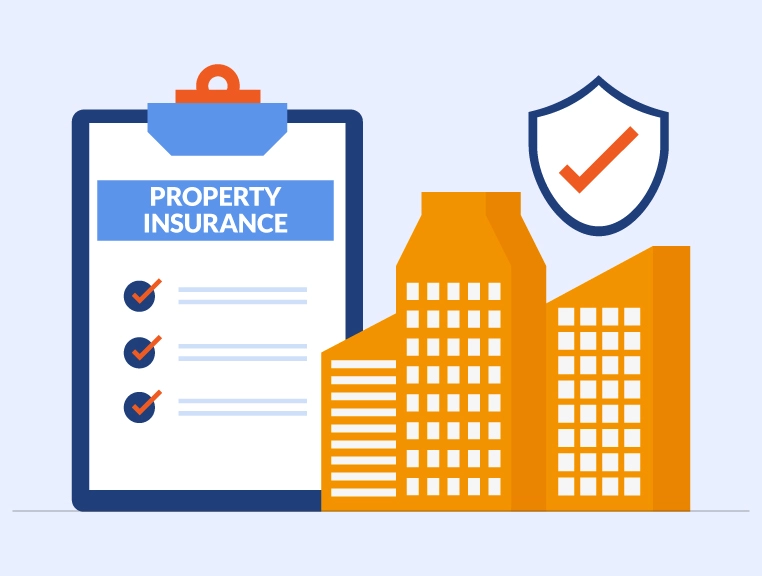The engineering all-risk insurance policy covers the insured against any unforeseen and physical loss of or damage to the insured items. Such damage to plants or machinery may necessitate its repair or replacement. In engineering all-risk insurance policies, an excess clause is present. The excess clause states that the asset owner must bear the minimum amount of loss in the event of the claim. The insurer makes the payment for the remaining amount. In engineering all-risk insurance, the reason behind including the excess clause is as follows:
- The claim processing charge is more than the claim amount.
- To avoid the insured from claiming for smaller amounts.
- Also to make the insured act prudently in further scenarios.
- To give the insured interest in avoiding claims.
Under the engineering all-risk insurance policy, the excess depends upon:
- The amount sum insured for the individual machine
- Type of plant and machinery
- Reason for the claim, i.e. if the claim arises due to an ‘Act of God (AOG) peril or other factors.
When machinery or plant suffers from any loss, only one excess is applicable. That excess either depends on a specific percentage of the sum assured or the minimum excess amount for that machinery. The insurer will have to pay whichever amount is higher between the two.
At the same time, the excess also applies to any claims arising due to the damage to the surrounding property Airfreight, or additional customs duty.
Check more: What is covered under Engineering All Risk Insurance?
The excess amount stated may vary for different insurance players. Following is the minimum amount of excess applicable:
When the value of the equipment is up to rupees 1 lakh:
- For claims arising due to Act of God perils, the excess amount is 10% of the subject insured or a minimum amount stated in the policy, whichever is higher.
- For claims arising due to perils other than the Act of God, the excess amount is 2% of the subject insured or a minimum amount stated in the policy, whichever is higher.
When the value of the equipment is between 1 lakh to 5 lakhs:
- For claims arising due to Act of God perils, the excess amount is 5 % of the subject insured or a minimum amount stated in the policy, whichever is higher.
- For claims arising due to perils other than the Act of God, the excess amount is 1.5% of the subject insured or a minimum amount stated in the policy, whichever is higher.
When the value of the equipment is between 5 lakhs to 10 lakhs:
- For claims arising due to Act of God perils, the excess amount is 3 % of the subject insured or a minimum amount stated in the policy, whichever is higher.
- For claims arising due to perils other than the Act of God, the excess amount is 1.25% of the subject insured or a minimum amount stated in the policy, whichever is higher.
When the value of the equipment is between 10 lakhs to 25 lakhs:
- For claims arising due to Act of God perils, the excess amount is 2 % of the subject insured or a minimum amount stated in the policy, whichever is higher.
- For claims arising due to perils other than the Act of God, the excess amount is 1% of the subject insured or a minimum amount stated in the policy, whichever is higher.
When the value of the equipment is between 25 lakhs to 50 lakhs rupees:
- For claims arising due to Act of God perils, the excess amount is 1 % of the subject insured or a minimum amount stated in the policy, whichever is higher.
- For claims arising due to perils other than Acts of God, the excess amount is up to 25,00 rupees.
When the value of the equipment is above 50 lakhs rupees:
- For claims arising due to Act of God perils, the excess amount is 1 % of the subject insured or a minimum amount stated in the policy, whichever is higher.
- For claims arising due to perils other than Acts of God, the excess amount is up to 35,00 rupees.
In engineering an all-risk insurance policy, the insured can also avail of the principle of voluntarily assumed excess. This allows the insured to reduce the premium. As the insured accepts a higher level of excess than required, he is able to reduce his premium charges.
Read More: What is the basis of indemnity in Engineering all risk insurance?
Case Study:
Anand, an owner of a construction company, had obtained an engineering all-risk insurance policy. The policy stated the sum insured for each machinery. It also stated the excess cost that Anand will have to pay in case of damage to any machinery. During the construction work, one of his machinery failed. The insurer investigated and found that it could not be repaired and was completely damaged. The sum insured for the machinery was four lakhs. Hence Anand had to pay 1.5% of the sum insured for the excess amount as stated in his policy.
About The Author
Shivani
MBA Insurance and Risk
She has a passion for property insurance and a wealth of experience in the field, Shivani has been a valuable contributor to SecureNow for the past six years. As a seasoned writer, they specialize in crafting insightful articles and engaging blogs that educate and inform readers about the intricacies of property insurance. She brings a unique blend of expertise and practical knowledge to their writing, drawing from her extensive background in the insurance industry. Having worked in various capacities within the sector, she deeply understands the challenges and opportunities facing property owners and insurers alike.




